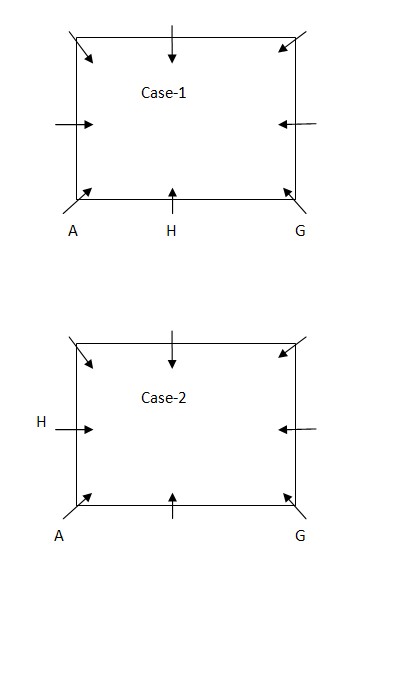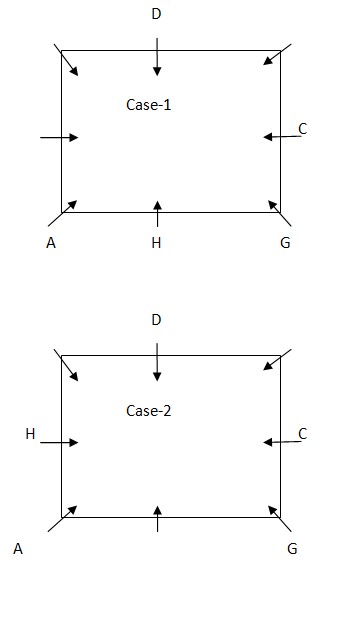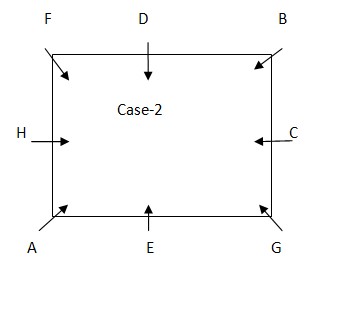Question
If all the persons are arranged in alphabetical order
in the clockwise direction with respect to A, then how many persons remain unchanged in their position (Excluding A)? Study the following information carefully and answer the below questions Eight persons – A, B, C, D, E, F, G and H are sitting in the square table such that all of them are facing towards the center. Four persons are sitting in the middle of the sides of the table and four persons are sitting at the corner of the table. All the information is not necessarily in the same order. A sits second to the left of G, who sits at one of the corner of the table. H sits either to the immediate right or to the immediate left of A. D sits opposite to the one who sits second to the left of C. C sits in the middle of the sides of table. D is neither the immediate neighbor of G nor A. E is the immediate neighbor of either of A or F, but not the both. B sits second to the left of F.Solution
A sits second to the left of G, who sits at one of the corner of the table. H sits either to the immediate right or to the immediate left of A. From the above condition, there are two possibilities.  D sits opposite to the one who sits second to the left of C. C sits in the middle of the sides of table. D is neither the immediate neighbor of G nor A
D sits opposite to the one who sits second to the left of C. C sits in the middle of the sides of table. D is neither the immediate neighbor of G nor A  E is the immediate neighbor of either of A or F, but not the both. B sits second to the left of F. From the above condition, case1 gets eliminated. Case 2 shows the final arrangement.
E is the immediate neighbor of either of A or F, but not the both. B sits second to the left of F. From the above condition, case1 gets eliminated. Case 2 shows the final arrangement. 
Statements:Some mugs are soaps.
Some soaps are taps.
Conclusions:I. Some taps are mugs.
II. No mugs is tap.
Statements:
Only a few Careers are Visions.
Some Visions are not Missions.
Some Missions are not Ambitions.
Only a few Ambit...
Statements: All eleven are twelve.
Some twelve are thirteen.
All thirteen are fourteen
Conclusions: ...
Statements: Some chairs are table.
All tables are window.
Conclusions: I. All table are chair.
...
Statements:
Only Footballs is Cricket
20% Footballs is Hockey
Only a few Hockey is Rugby.
Conclusion:
I. S...
Statement
Only a few Apple is Banana
All Bananas are Orange
No Orange is Grapes
Conclusion
I) All Apple can ne...
Statements:
Only mango is apple.
No orange is a Peach.
Some Peaches are guavas.
Some guavas are mangoes.
Conclusio...
- In the question below there are three statements followed by two conclusions I and II. You have to take the three given statements to be true even if they ...
Statements: Some pins are mirrors.
All mirrors are boxes.
Conclusions:I. Some boxes are pins.
II. Some boxes are mirrors.
Statements:
All Paint is Bucket
All Bucket is Plastic
No Plastic is Harmful
Conclusions:
I. Some Paint can be P...
Relevant for Exams:


